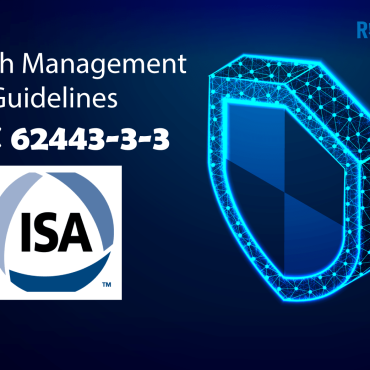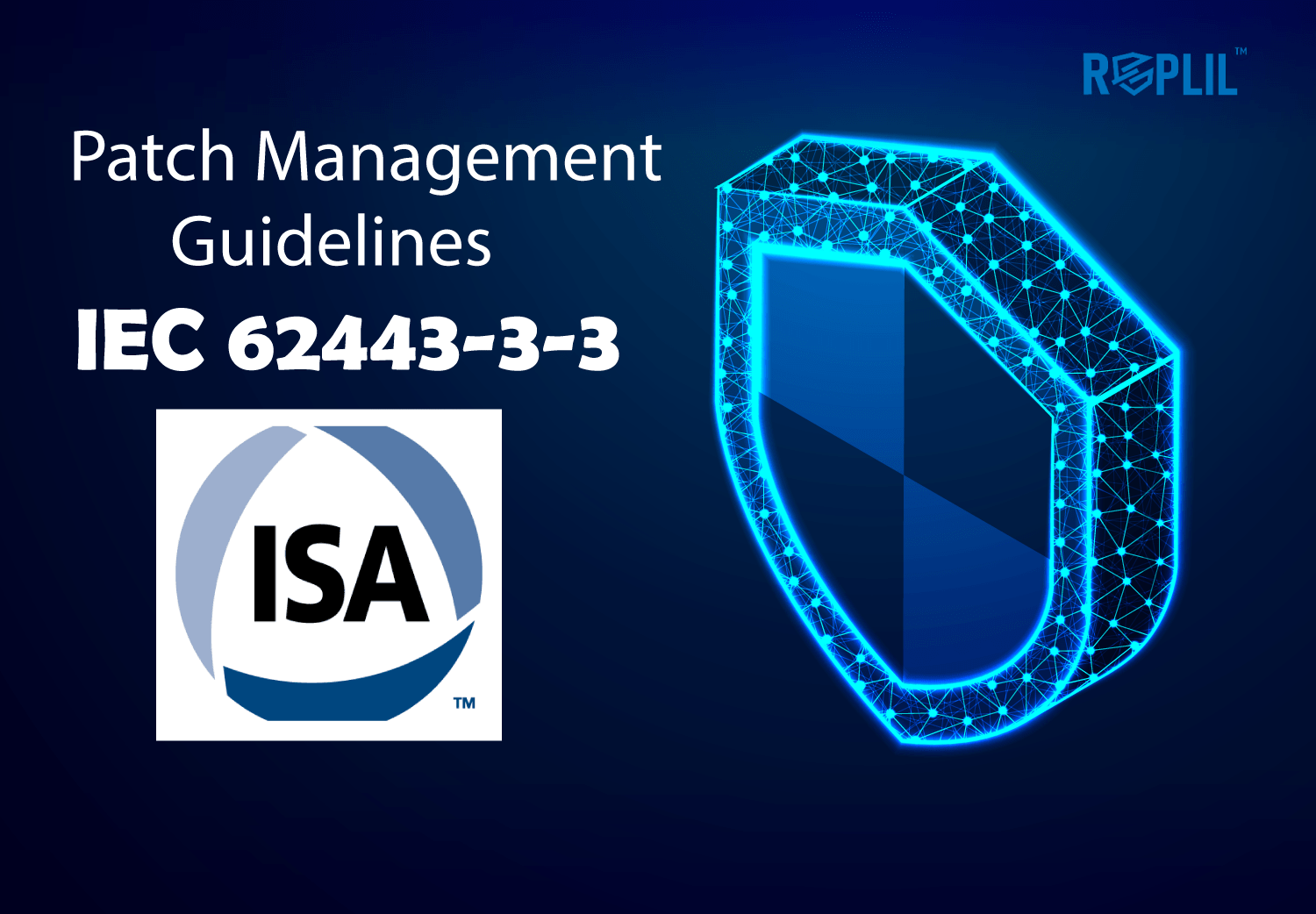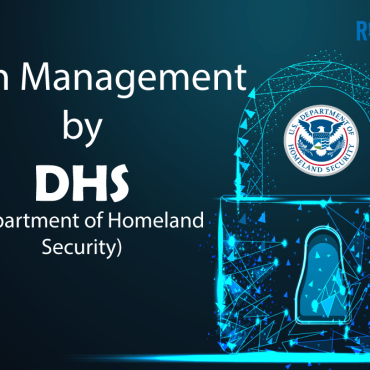
Patch management is a critical aspect of cybersecurity for Industrial Control Systems (ICS) and other Operational Technology (OT) systems. It involves the process of identifying, prioritizing, testing, deploying, and verifying patches for software vulnerabilities in ICS and OT systems. The IEC 62443-2-3 standard provides guidelines for developing a comprehensive patch management program for ICS and OT systems. In this article, we will explore the key aspects of patch management, as outlined in the IEC 62443-2-3 standard, and provide additional insights and recommendations for effective patch management.
The Importance of Patch Management
The primary reason for implementing patch management in ICS and OT systems is to ensure that software vulnerabilities are addressed in a timely and effective manner. Patches are typically released by software vendors in response to newly discovered vulnerabilities or bugs. These vulnerabilities can be exploited by attackers to gain unauthorized access to systems, steal data, or cause damage to critical infrastructure. Therefore, timely patching of vulnerabilities is critical to maintaining the security and integrity of ICS and OT systems.
Patch management also plays a critical role in ensuring compliance with industry standards and regulations. Many industry standards, such as the IEC 62443, require organizations to implement effective patch management processes to protect their ICS and OT systems against cyber threats.
The Patch Management Lifecycle
The patch management lifecycle consists of five phases: patch identification, patch prioritization, patch testing, patch deployment, and patch verification. Each phase is critical to the success of the patch management process, and organizations must implement formal processes and procedures for each phase.
Patch Identification
The first phase of the patch management lifecycle is patch identification. This phase involves identifying patches that are relevant to the ICS and OT systems in use. This can be done by monitoring vendor release notes, security bulletins, and other sources of information for software vulnerabilities that may impact ICS and OT systems. The IEC 62443-2-3 standard recommends that organizations establish a process for tracking and evaluating security alerts and establish criteria for determining whether a patch is necessary.
Additional recommendations for effective patch identification include:
- Establishing a centralized system for tracking and managing software vulnerabilities and patches
- Automating the process of vulnerability scanning and patch identification using vulnerability management tools
- Conducting regular vulnerability assessments and penetration testing to identify vulnerabilities that may not be detected by automated tools
- Establishing partnerships with software vendors and industry organizations to stay informed about new vulnerabilities and patches that may impact ICS and OT systems
Patch Prioritization
The next phase of the patch management lifecycle is patch prioritization. Once patches have been identified, they must be prioritized based on their criticality and potential impact on the ICS and OT systems. The IEC 62443-2-3 standard recommends that organizations establish a formal process for evaluating the risk associated with each vulnerability and prioritizing the deployment of patches accordingly.
Additional recommendations for effective patch prioritization include:
- Establishing a risk management framework that includes criteria for evaluating the impact and likelihood of exploitation of vulnerabilities
- Prioritizing patches that address vulnerabilities that are actively being exploited by attackers or that have a high likelihood of exploitation
- Prioritizing patches that address vulnerabilities that have the highest impact on the availability, integrity, and confidentiality of ICS and OT systems
- Prioritizing patches that address vulnerabilities that are required by industry standards or regulations
Patch Testing
Before deploying patches, it is critical to test them in a controlled environment to ensure that they do not introduce new problems or disrupt the normal operation of the ICS and OT systems. The IEC 62443-2-3 standard recommends that organizations establish a formal testing process for patches, including a test plan, test cases, and test results documentation.
Additional recommendations for effective patch testing include:
- Testing patches on a representative sample of ICS and OT systems to ensure that they are compatible and do not cause any negative impact on the systems
- Conducting regression testing to ensure that the patches do not introduce new vulnerabilities or break existing functionality
- Engaging with vendor support and industry experts to ensure that patches are tested and validated before deployment
- Establishing a rollback plan in case the patches cause unexpected problems or disruptions to the systems
Patch Deployment
Once patches have been identified, prioritized, and tested, they can be deployed to the ICS and OT systems. The IEC 62443-2-3 standard recommends that organizations establish a formal process for deploying patches, including a change management process, a deployment plan, and documentation of the deployment process.
Additional recommendations for effective patch deployment include:
- Establishing a maintenance window for deploying patches to minimize disruptions to the normal operation of the systems
- Ensuring that the deployment process is well-documented and that stakeholders are informed of any potential impacts or disruptions to the systems
- Ensuring that the systems are backed up before the deployment of patches to minimize the risk of data loss or corruption
- Verifying that the patches have been successfully deployed and that the systems are functioning as expected
Patch Verification
The final phase of the patch management lifecycle is patch verification. This phase involves verifying that the patches have been successfully deployed and that the ICS and OT systems are functioning as expected. The IEC 62443-2-3 standard recommends that organizations establish a formal process for patch verification, including testing and documentation of the verification process.
Additional recommendations for effective patch verification include:
- Conducting a post-deployment validation to ensure that the patches have been successfully applied and that the systems are functioning as expected
- Monitoring the systems for any unusual behaviour or performance issues after the deployment of patches
- Documenting the verification process and the results of the verification to ensure that stakeholders are informed of the status of the systems
Conclusion
Effective patch management is critical to the security and integrity of ICS and OT systems. The IEC 62443-2-3 standard provides guidelines for developing a comprehensive patch management program that covers the entire patch management lifecycle. Organizations must establish formal processes and procedures for patch identification, prioritization, testing, deployment, and verification to ensure that vulnerabilities are addressed in a timely and effective manner. In addition to the recommendations outlined in the standard, organizations should also consider additional best practices and industry standards for effective patch management. By implementing effective patch management processes, organizations can mitigate the risk of cyberattacks and ensure the safe and secure operation of their ICS and OT systems.









